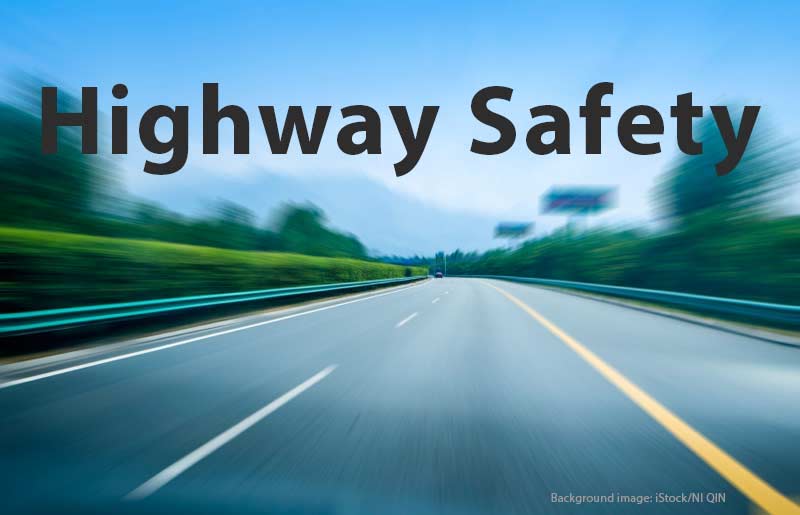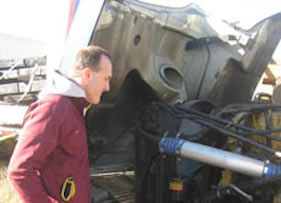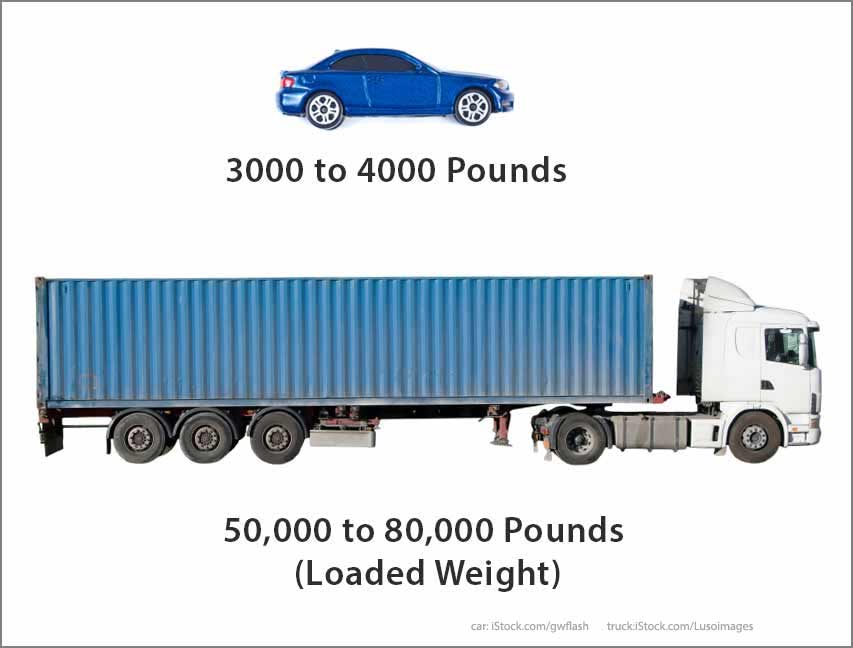Driving on the highways is necessary for many people, and can be a fun experience for others. But there are inherent dangers involved when traveling on the roads. Here are ten ways to help protect yourself when you’re on the road.
-
Attorney Eric Hageman inspects a truck after an accident. You can contact Eric for a FREE case evaluation (click here). He is a member of the American Association of Justice Trucking Litigation Group. He has won many multimillion-dollar settlements and verdicts for his clients. Stay alert and scan the road ahead. Get in the habit of watching not only the cars and trucks directly ahead and behind you, but watch the traffic in front and back of those cars as well. This may give you more time to react to a potential crash before it affects you.
- Keep a safe distance between you and the car or truck ahead of you. Staying far enough behind cars is not only a good idea for your safety, it’s the law in many states. Following another car too closely is aggressive driving, and it endangers you and those around you. Most experts recommend a 3 second following distance between you and the vehicle in front of you if you are driving a passenger car or light truck in ideal conditions. That distance should be increased when driving under poor conditions, driving at night, or if you are operating a large semi truck. This distance will not only help you stop in time in case of a crash ahead of you, it also means you don’t have to slam on your brakes and may prevent those behind you from crashing into your car.
- Keep both hands on the wheel. Imagine that the steering wheel is a clock; put your hands in the 9:00 and 3:00 position. This practice will give you good control if you have to maneuver quickly or if your car starts to slide or spin on slick or slippery roads.
- Avoid distractions. Never text or look at anything other than the road when driving. Experts say that texting is just as bad as drunk driving (and it goes without saying that you should never drive after consuming alcohol). Don’t read or talk on the phone either. If you must look at a map, pull over in a safe place and stop, then check your route.
Watch out for blind spots. All cars and trucks have blind spots where you can’t see other vehicles or pedestrians. Even a panoramic rear view mirror can have blind spots. Always turn to look behind you when you are backing up, and turn to check the lane behind you when you are changing lanes. And remember about the blind spots for other drivers, especially large trucks. Don’t sit in someone’s blind spot when you’re on the road.
- Never drive when you’re sleepy. About 60% of adult drivers say that they have driven a wheel while feeling drowsy, and 37% have actually fallen asleep at the wheel. About 100,000 police-reported crashes are caused by driver fatigue every year in the U.S. These crashes are more common in young men, adults with children, and shift workers. Driving sleepy can be just as dangerous as driving drunk; in fact, being awake for 18 hours is equivalent to a blood alcohol concentration of .05. If you feel yourself nodding off, pull off the road and find a place to nap.
- Keep your vehicle in good shape. Make sure that the tires are adequately and safely inflated to reduce the risk of a blowout and to make sure you can stop the car within a reasonable distance. Make sure that the tires are aligned as well. Get your brakes checked every year and make sure that the brake lining is in good condition. Keep windshield fluid at a good level and change wiper blades often for good visibility.
- Be extra cautious when driving at sunrise, dusk, and at night. Make sure that your lights and signals are in good working order so you can see well and so others can see you. Clean off headlights about once a week; more often when road spray makes them dirty. Remember that if your windshield is dirty, the headlights will be dirty too. Watch out for animals on the road at dusk.
- Avoid large trucks and semi tractor-trailers. These vehicles cause serious injury and death when in accidents with passenger cars and light trucks. Stay away from them, don’t tail these vehicles, and if you must pass them, do so quickly. Large semis can have big blind spots too; don’t stay in those spots on the road.
- Stick to the speed limit. Speed is a factor in many crashes, especially fatal crashes. Use cruise control on the highway to maintain a steady, safe speed.
This information is provided as a public service by Pritzker Hageman, P.A., a Minnesota law firm whose truck accident lawyers help clients throughout the United States with personal injury and wrongful death lawsuits against negligent truck drivers and trucking companies, including FedEx.


 Watch out for blind spots. All cars and trucks have blind spots where you can’t see other vehicles or pedestrians. Even a panoramic rear view mirror can have blind spots. Always turn to look behind you when you are backing up, and turn to check the lane behind you when you are changing lanes. And remember about the blind spots for other drivers, especially large trucks. Don’t sit in someone’s blind spot when you’re on the road.
Watch out for blind spots. All cars and trucks have blind spots where you can’t see other vehicles or pedestrians. Even a panoramic rear view mirror can have blind spots. Always turn to look behind you when you are backing up, and turn to check the lane behind you when you are changing lanes. And remember about the blind spots for other drivers, especially large trucks. Don’t sit in someone’s blind spot when you’re on the road.